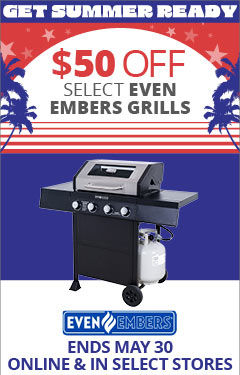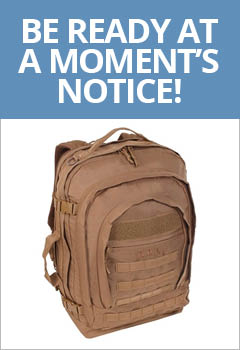Father's Day Gift Guide
Swim Shop
Fan Shop
NBA
NBA
Denver Nuggets Miami Heat Boston Celtics Los Angeles Lakers Golden State Warriors See MoreNHL
NHL
Vegas Golden Knights Florida Panthers Boston Bruins Chicago Blackhawks Seattle Kraken See MoreElectronics
Computers
Computers
iPads & Tablets Laptops Desktops Computer Monitors Printers & Accessories Computer Accessories Computer Accessories iPads & Tablets Laptops Desktops Printers & Accessories Drives, Storage & Memory Networking Computer Monitors Video Cards & PC Components Software See More ComputersAudio
Audio
Headphones & Microphones Speakers Home Audio Audio Accessories Audio / Video StorageCell Phones & Telephones
Cell Phones & Telephones
Cell Phones Cell Phone Accessories Telephones Bluetooth Trackers Cell Phone Cases Cell Phone Batteries & Chargers Cell Phone Batteries & Chargers Cell Phone Accessories Cell Phone Cases Cell Phone Adapters & Cables Cell Phone Screen Protectors Video & Photography Accessories Car Mounts Telephones Cell Phones See More Cell Phones & TelephonesFurniture & Appliances
Kitchen Appliances
Kitchen Appliances
Coffee, Tea & Espresso Specialty Appliances Blenders & Juicers Cookers & Steamers Compact Refrigerators Toasters & Ovens Indoor Grills & Griddles Fryers Microwave Ovens Waffle Makers Mixers Ice Cream & Dessert Makers Food Processors Popcorn Makers Can Openers Ice Makers See More Kitchen AppliancesPatio, Garden & Garage
Household
Office & School Supplies
Office & School Supplies
Classroom Supplies Calendars & Planners Writing Supplies Notebooks & Organizers Desk Accessories Display Boards Mailing & Shipping Paper Products Binders & Folders Office Equipment Filing Personnel & Security Labels & Label Makers Paper Shredders See More Office & School SuppliesSports & Outdoors
Hunting & Shooting
Hunting & Shooting
Firearm Components Firearms Scopes & Binoculars Ammunition Range Bags, Packs & Pouches Holsters & Slings Tactical Accessories Gun Cases Gun Cleaning Eye & Hearing Protection Bipods & Rests Hunting Accessories Air & Demonstrator Guns Vests & Chest Rigs Archery See More Hunting & ShootingShoes
Clothing & Accessories
Beauty & Health
Jewelry & Watches
Class Six
Wine
Wine
Cabernet Sauvignon Chardonnay Pinot Noir Red Blend Sauvignon Blanc Sparkling Wine See More-
Military Star
Welcome!
Hi, !
EXCHANGE LOCATIONS THAT SELL FIREARMS BY REGION
| State | Firearms Locations (76 Stores) | Service |  |
|---|---|---|---|
| CA | Beale | USAF | |
| TX | Bliss | USA | |
| CO | Buckley | USAF | |
| NM | Cannon | USAF | |
| CO | Carson | USA | |
| AZ | Davis-Monthan | USAF | |
| TX | Dyess | USAF | |
| CA | Edwards | USAF | |
| AK | Eielson | USAF | |
| SD | Ellsworth | USAF | |
| AK | Elmendorf | USAF | |
| WA | Fairchild | USAF | |
| WY | FE Warren | USAF | |
| UT | Hill | USAF | |
| NM | Holloman | USAF | |
| AZ | Huachuca | USA | |
| CA | Irwin | USA | |
| NM | Kirtland | USAF | |
| WA | Lewis | USA | |
| CA | Los Angeles | USAF | |
| AZ | Luke | USAF | |
| MT | Malmstrom | USAF | |
| WA | Mcchord | USAF | |
| ID | Mt Home | USAF | |
| NV | Nellis | USAF | |
| CO | Peterson | USAF | |
| TX | Randolph | USAF | |
| CA | Travis | USAF | |
| CO | USAF | USAF | |
| CA | Vandenburg | USAF | |
| AK | Wainwright | USA |
| State | Firearms Locations (76 Stores) | Service |  |
|---|---|---|---|
| LA | Barksdale | USAF | |
| KY | Campbell | USA | |
| FL | Eglin | USAF | |
| ND | Grandfork | USAF | |
| TX | Cavazos | USA | |
| MS | Keesler | USAF | |
| KY | Knox | USA | |
| KS | Leavenworth | USA | |
| MO | Leonard Wood | USA | |
| AR | Little Rock | USAF | |
| ND | Minot | USAF | |
| KS | McConnell | USAF | |
| TX | Nasjrb Bxtra | USN | |
| AL | Novosel | USA | |
| NE | Offut | USAF | |
| LA | Johnson | USA | |
| AL | Redstone | USAF | |
| AL | Maxwell | USAF | |
| KS | Riley | USA | |
| IL | Scott | USAF | |
| MI | Selfridge | USAF | |
| OK | Sill | USA | |
| OK | Tinker | USAF | |
| MO | Whiteman | USAF | |
| OH | Wright Patterson Home & Garden | USAF |
| State | Firearms Locations (76 Stores) | Service |  |
|---|---|---|---|
| MD | Andrews | USAF | |
| VA | Belvoir | USA | |
| GA | Moore | USA | |
| NC | Liberty Sports | USA | |
| NC | Liberty South Post | USA | |
| SC | Charleston | USAF | |
| NY | Drum | USA | |
| VA | Eustis | USA | |
| GA | Eisenhower | USA | |
| FL | Hurlburt | USAF | |
| SC | Jackson | USA | |
| VA | Langley | USAF | |
| FL | Macdill | USAF | |
| MD | Meade | USA | |
| FL | Patrick | USAF | |
| GA | Robins | USAF | |
| NC | Seymor Johnson | USAF | |
| SC | Shaw | USAF | |
| GA | Stewart | USA | |
| FL | Tyndall | USAF |
FIREARM SAFETY – 10 RULES FOR SAFE FIREARM HANDLING
1. Learn The Mechanical And Handling Characteristics Of The Firearm You Are Using
2. Don't Alter Or Modify Your Gun, And Have Guns Serviced Regularly
3. Always Keep The Muzzle Pointed In A Safe Direction
4. Don't Rely On Your Gun's "Safety"
5. Firearms Should Be Unloaded When Not Actually In Use
7. Always Wear Eye And Ear Protection When Shooting
8. Be Sure The Barrel Is Clear Of Obstructions Before Shooting
9. Be Sure Of Your Target And What's Beyond It
10. If Your Gun Fails To Fire When The Trigger Is Pulled, Handle With Care!
1. Learn The Mechanical And Handling Characteristics Of The Firearm You Are Using
 Not all firearms are the same. The method of carrying and handling firearms varies in accordance with the mechanical characteristics of each gun. Since guns can be so different, never handle any firearm without first having thoroughly familiarized yourself with the particular type of firearm you are using, the safe gun handling rules for loading, unloading, carrying and handling that firearm, and the rules of safe gun handling in general.
Not all firearms are the same. The method of carrying and handling firearms varies in accordance with the mechanical characteristics of each gun. Since guns can be so different, never handle any firearm without first having thoroughly familiarized yourself with the particular type of firearm you are using, the safe gun handling rules for loading, unloading, carrying and handling that firearm, and the rules of safe gun handling in general.
For example, many handgun manufacturers recommend that their handguns always be carried with the hammer down on an empty chamber. This is particularly true for older single-action revolvers, but applies equally to some double-action revolvers or semiautomatic pistols. You should always read and refer to the instruction manual you received with your gun, or if you have misplaced the manual, simply contact the manufacturer for a free copy.
Having a gun in your possession is a full-time job. You cannot guess; you cannot forget. You must know how to use, handle and store your firearm safely. Do not use any firearm without having a complete understanding of its particular characteristics and safe use. There is no such thing as a foolproof gun.
2. Don't Alter Or Modify Your Gun, And Have Guns Serviced Regularly
 Firearms are complicated mechanisms that are designed by experts to function properly in their original condition. Any alteration or change made to a firearm after manufacture can make the gun dangerous and will usually void any factory warranties. Do not jeopardize your safety or the safety of others by altering the trigger, safety or other mechanism of any firearm or allowing unqualified persons to repair or modify a gun. You'll usually ruin an expensive gun. Don't do it!
Firearms are complicated mechanisms that are designed by experts to function properly in their original condition. Any alteration or change made to a firearm after manufacture can make the gun dangerous and will usually void any factory warranties. Do not jeopardize your safety or the safety of others by altering the trigger, safety or other mechanism of any firearm or allowing unqualified persons to repair or modify a gun. You'll usually ruin an expensive gun. Don't do it!
Your gun is a mechanical device that will not last forever and is subject to wear. As such, it requires periodic inspection, adjustment and service. Check with the manufacturer of your firearm for recommended servicing.
3. Always Keep The Muzzle Pointed In A Safe Direction
 This is the most basic safety rule. If everyone handled a firearm so carefully that the muzzle never pointed at something they didn't intend to shoot, there would be virtually no firearms accidents. It's as simple as that, and it's up to you.
This is the most basic safety rule. If everyone handled a firearm so carefully that the muzzle never pointed at something they didn't intend to shoot, there would be virtually no firearms accidents. It's as simple as that, and it's up to you.
Never point your gun at anything you do not intend to shoot. This is particularly important when loading or unloading a firearm.
In the event of an accidental discharge, no injury can occur as long as the muzzle is pointing in a safe direction. A safe direction means a direction in which a bullet cannot possibly strike anyone, taking into account possible ricochets and the fact that bullets can penetrate walls and ceilings. The safe direction may be "up" on some occasions or "down" on others, but never at anyone or anything not intended as a target. Even when "dry firing" with an unloaded gun, you should never point the gun at an unsafe target.
Make it a habit to know exactly where the muzzle of your gun is pointing at all times, and be sure that you are in control of the direction in which the muzzle is pointing, even if you fall or stumble. This is your responsibility, and only you can control it.
4. Don't Rely On Your Gun's "Safety"
 Treat every gun as though it can fire at any time. The "safety" on any gun is a mechanical device which, like any such device, can become inoperable at the worst possible time. Besides, by mistake, the safety may be "off" when you think it is "on." The safety serves as a supplement to proper gun handling but cannot possibly serve as a substitute for common sense. You should never handle a gun carelessly and assume that the gun won't fire just because the "safety is on."
Treat every gun as though it can fire at any time. The "safety" on any gun is a mechanical device which, like any such device, can become inoperable at the worst possible time. Besides, by mistake, the safety may be "off" when you think it is "on." The safety serves as a supplement to proper gun handling but cannot possibly serve as a substitute for common sense. You should never handle a gun carelessly and assume that the gun won't fire just because the "safety is on."
Never touch the trigger on a firearm until you actually intend to shoot. Keep your fingers away from the trigger while loading or unloading. Never pull the trigger on any firearm with the safety on the "safe" position or anywhere in between "safe" and "fire." It is possible that the gun can fire at any time, or even later when you release the safety, without your ever touching the trigger again.
Never place the safety in between positions, since half-safe is unsafe. Keep the safety "on" until you are absolutely ready to fire.
Regardless of the position of the safety, any blow or jar strong enough to actuate the firing mechanism of a gun can cause it to fire. This can happen even if the trigger is not touched, such as when a gun is dropped. Never rest a loaded gun against any object because there is always the possibility that it will be jarred or slide from its position and fall with sufficient force to discharge. The only time you can be absolutely certain that a gun cannot fire is when the action is open and it is completely empty. Again, never rely on your gun's safety. You and the safe gun handling procedures you have learned are your gun's primary safeties.
5. Firearms Should Be Unloaded When Not Actually In Use
 Firearms should be loaded only when you are in the field or on the target range or shooting area, ready to shoot. When not in use, firearms and ammunition should be secured in a safe place, separate from each other. It is your responsibility to prevent children and unauthorized adults from gaining access to firearms or ammunition.
Firearms should be loaded only when you are in the field or on the target range or shooting area, ready to shoot. When not in use, firearms and ammunition should be secured in a safe place, separate from each other. It is your responsibility to prevent children and unauthorized adults from gaining access to firearms or ammunition.
Unload your gun as soon as you are finished. A loaded gun has no place in or near a car, truck or building. Unload your gun immediately when you have finished shooting, well before you bring it into a car, camp or home.
Whenever you handle a firearm or hand it to someone, always open the action immediately, and visually check the chamber, receiver and magazine to be certain they do not contain any ammunition. Always keep actions open when not in use. Never assume a gun is unloaded check for yourself! This is considered a mark of an experienced gun handler!
Never cross a fence, climb a tree or perform any awkward action with a loaded gun. While in the field, there will be times when common sense and the basic rules of firearms safety will require you to unload your gun for maximum safety. Never pull or push a loaded firearm toward yourself or another person. There is never any excuse to carry a loaded gun in a scabbard, a holster not being worn or a gun case. When in doubt, unload your gun!
6. Use Correct Ammunition
 You must assume the serious responsibility of using only the correct ammunition for your firearm. Read and heed all warnings, including those that appear in the gun's instruction manual and on the ammunition boxes.
You must assume the serious responsibility of using only the correct ammunition for your firearm. Read and heed all warnings, including those that appear in the gun's instruction manual and on the ammunition boxes.
Using improper or incorrect ammunition can destroy a gun and cause serious personal injury. It only takes one cartridge of improper caliber or gauge to wreck your gun, and only a second to check each one as you load it. Be absolutely certain that the ammunition you are using matches the specifications that are contained within the gun's instruction manual and the manufacturer's markings on the firearm.
Firearms are designed, manufactured and proof tested to standards based upon those of factory loaded ammunition. Hand loaded or reloaded ammunition deviating from pressures generated by factory loads or from component recommendations specified in reputable hand loading manuals can be dangerous, and can cause severe damage to guns and serious injury to the shooter. Do not use improper reloads or ammunition made of unknown components.
Ammunition that has become very wet or has been submerged in water should be discarded in a safe manner. Do not spray oil or solvents on ammunition or place ammunition in excessively lubricated firearms. Poor ignition, unsatisfactory performance or damage to your firearm and harm to yourself or others could result from using such ammunition.
Form the habit of examining every cartridge you put into your gun. Never use damaged or substandard ammunition the money you save is not worth the risk of possible injury or a ruined gun.
7. Always Wear Eye And Ear Protection When Shooting
 All shooters should wear protective shooting glasses and some form of hearing protectors while shooting. Exposure to shooting noise can damage hearing, and adequate vision protection is essential. Shooting glasses guard against twigs, falling shot, clay target chips and the rare ruptured case or firearm malfunction. Wearing eye protection when disassembling and cleaning any gun will also help prevent the possibility of springs, spring tension parts, solvents or other agents from contacting your eyes. There is a wide variety of eye and ear protectors available. No target shooter, plinker or hunter should ever be without them.
All shooters should wear protective shooting glasses and some form of hearing protectors while shooting. Exposure to shooting noise can damage hearing, and adequate vision protection is essential. Shooting glasses guard against twigs, falling shot, clay target chips and the rare ruptured case or firearm malfunction. Wearing eye protection when disassembling and cleaning any gun will also help prevent the possibility of springs, spring tension parts, solvents or other agents from contacting your eyes. There is a wide variety of eye and ear protectors available. No target shooter, plinker or hunter should ever be without them.
Most rules of shooting safety are intended to protect you and others around you, but this rule is for your protection alone. Furthermore, having your hearing and eyes protected will make your shooting easier and will help improve your enjoyment of the shooting sports.
8. Be Sure The Barrel Is Clear Of Obstructions Before Shooting
 Before you load your firearm, open the action and be certain that no ammunition is in the chamber or magazine. Be sure the barrel is clear of any obstruction. Even a small bit of mud, snow, excess lubricating oil or grease in the bore can cause dangerously increased pressures, causing the barrel to bulge or even burst on firing, which can cause injury to the shooter and bystanders. Make it a habit to clean the bore and check for obstructions with a cleaning rod immediately before you shoot it. If the noise or recoil on firing seems weak or doesn't seem quite "right," cease firing immediately and be sure to check that no obstruction or projectile has become lodged in the barrel.
Before you load your firearm, open the action and be certain that no ammunition is in the chamber or magazine. Be sure the barrel is clear of any obstruction. Even a small bit of mud, snow, excess lubricating oil or grease in the bore can cause dangerously increased pressures, causing the barrel to bulge or even burst on firing, which can cause injury to the shooter and bystanders. Make it a habit to clean the bore and check for obstructions with a cleaning rod immediately before you shoot it. If the noise or recoil on firing seems weak or doesn't seem quite "right," cease firing immediately and be sure to check that no obstruction or projectile has become lodged in the barrel.
Placing a smaller gauge or caliber cartridge into a gun (such as a 20-gauge shell in a 12-gauge shotgun) can result in the smaller cartridge falling into the barrel and acting as a bore obstruction when a cartridge of proper size is fired. This can cause a burst barrel or worse. This is really a case where "haste makes waste." You can easily avoid this type of accident by paying close attention to each cartridge you insert into your firearm.
9. Be Sure Of Your Target And What's Beyond It
 No one can call a shot back. Once a gun fires, you have given up all control over where the shot will go or what it will strike. Don't shoot unless you know exactly what your shot is going to strike. Be sure that your bullet will not injure anyone or anything beyond your target. Firing at a movement or a noise without being absolutely certain of what you are shooting at constitutes disregard for the safety of others. No target is so important that you cannot take the time before you pull the trigger to be absolutely certain of your target and where your shot will stop.
No one can call a shot back. Once a gun fires, you have given up all control over where the shot will go or what it will strike. Don't shoot unless you know exactly what your shot is going to strike. Be sure that your bullet will not injure anyone or anything beyond your target. Firing at a movement or a noise without being absolutely certain of what you are shooting at constitutes disregard for the safety of others. No target is so important that you cannot take the time before you pull the trigger to be absolutely certain of your target and where your shot will stop.
Be aware that even a 22 short bullet can travel over 11/4 miles and a high velocity cartridge, such as a 30-06, can send its bullet more than 3 miles. Shotgun pellets can travel 500 yards, and shotgun slugs have a range of over half a mile. You should keep in mind how far a bullet will travel if it misses your intended target or ricochets in another direction
10. If Your Gun Fails To Fire When The Trigger Is Pulled, Handle With Care!
 Occasionally, a cartridge may not fire when the trigger is pulled. If this occurs, keep the muzzle pointed in a safe direction. Keep your face away from the breech. Then, carefully open the action, unload the firearm and dispose of the cartridge in a safe way.
Occasionally, a cartridge may not fire when the trigger is pulled. If this occurs, keep the muzzle pointed in a safe direction. Keep your face away from the breech. Then, carefully open the action, unload the firearm and dispose of the cartridge in a safe way.
Any time there is a cartridge in the chamber, your gun is loaded and ready to fire even if you've tried to shoot and it did not go off. It could go off at any time, so you must always remember Rule #1 and watch that muzzle!
Discharging firearms in poorly ventilated areas, cleaning firearms or handling ammunition may result in exposure to lead and other substances known to cause birth defects, reproductive harm and other serious physical injury. Have adequate ventilation at all times. Wash hands thoroughly after exposure.




























